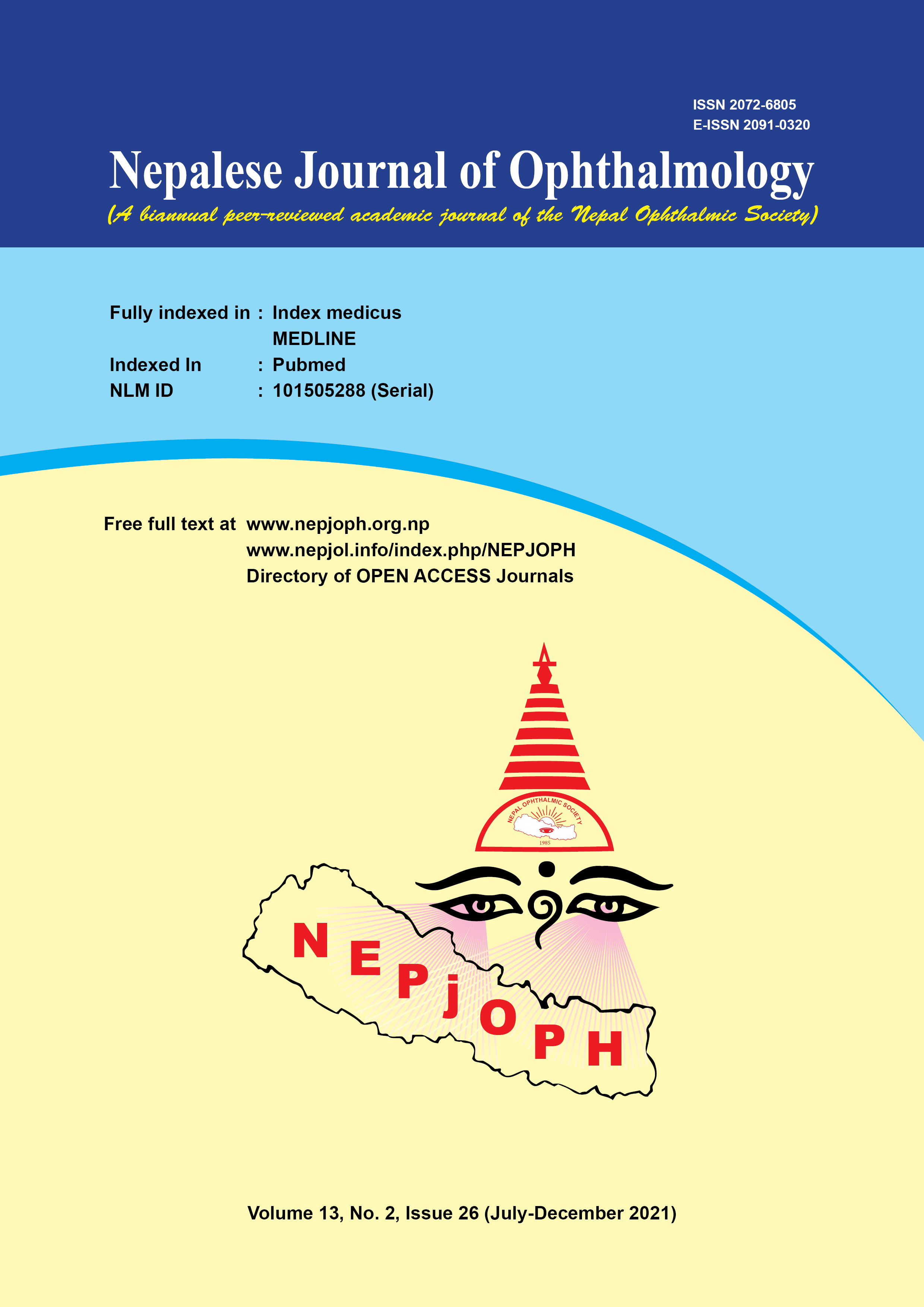Microbiological and Antibiotic Sensitivity Profile of Postoperative Endophthalmitis in a Tertiary Eye Care Hospital of North India
DOI:
https://doi.org/10.3126/nepjoph.v13i2.29255Keywords:
Postoperative endophthalmitis, Antibiotic sensitivity profile, Microbiological profileAbstract
Introduction: We describe the microbiological profile of postoperative endophthalmitis from northern India and analyse the pattern of antibiotic sensitivity which may have changed due to development of resistance secondary to overuse of antimicrobial drugs.
Materials and methods: This is a retrospective study of postoperative endophthalmitis from January 2011 to December 2017 in a tertiary eye hospital of northern India. Any patient developing endophthalmitis within one year of any intraocular procedure was included in the study. According to severity, treatment with a trial of intravitreal antibiotic injections or core vitrectomy was decided. Ocular samples were collected which were either anterior chamber tap or vitreous biopsy and sent for microbiological examination. The samples were stained with Gram’s and KOH stain and cultured on chocolate agar, blood agar, brain heart infusion broth and Sabouraud dextrose agar.
Results: A total of 545 patients of postoperative endophthalmitis were analysed which showed a male predilection (60.5%) with maximum patients between the age group 50-69 years. 292 patients (53.5%) were culture negative and 253 patients (46.4%) were culture positive.
Most common organism identified was Staphylococcus in 73 patients followed by Pseudomonas in 48 patients. Staphylococcus species was most sensitive to vancomycin (97%) followed by amikacin (91%) followed by gentamicin and moxifloxacin (88% each). Pseudomonas was the second most common isolate which showed maximum sensitivity to imipenem (82%) followed by ciprofloxacin(60%). Polymicrobial infection was noted in 23 patients. The most common fungal isolate was aspergillus in 11 patients, followed by fusarium in 10 patients.
Conclusion: Our study shows that gram positive bacteria are the most common organisms in postoperative endophthalmitis and are most sensitive to vancomycin, followed by gram negative bacteria which show increased sensitivity with imipenem than commonly used antibiotic - ceftazidime.
Downloads
Downloads
Published
How to Cite
Issue
Section
License
Copyright (c) 2021 Nepalese Journal of Ophthalmology

This work is licensed under a Creative Commons Attribution-NonCommercial-NoDerivatives 4.0 International License.
This license enables reusers to copy and distribute the material in any medium or format in unadapted form only, for noncommercial purposes only, and only so long as attribution is given to the creator.




